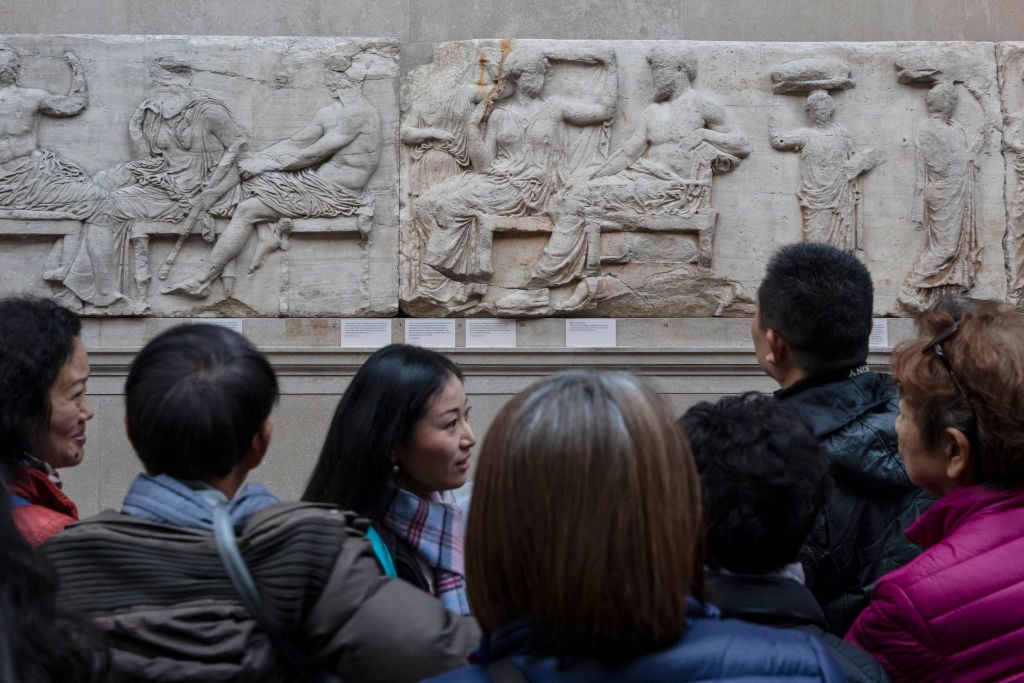
As Western nations increasingly move to restitute looted cultural artifacts to their countries of origin, pressure is intensifying for London’s British Museum to return Greece’s famed Parthenon Marbles.
The latest figure to come out in support of the Greek cause is Ed Vaizey, the former U.K. culture minister.
“It is so obvious to me that [the Parthenon Marbles] are so woven into Greek identity. It would be a wonderful thing if they could be returned,” Vaizey, the nation’s minister for culture from 2010 to 2016, told the Hope and Dread podcast.
He acknowledged that doing so could potentially open the door to other restitution claims against the nation, and that “it is extremely hard to know where to draw the line.”
The comments come just days after the revelation that Prime Minister Boris Johnson, who has for years defended the U.K.’s right to own the statues, wrote an article in 1986 arguing they should be returned.
“The Elgin marbles should leave this northern whisky-drinking guilt-culture, and be displayed where they belong: in a country of bright sunshine and the landscape of Achilles, ‘the shadowy mountains and the echoing sea,’” Johnson, then a college student, declared.
The tide of public opinion appears to be shifting in Greece’s favor. A November poll conducted in the U.K. found that 59 percent of respondents believes the marbles should be returned.
Sections of the Parthenon Marbles at The British Museum. Photo by Dan Kitwood/Getty Images.
Greece has recently amped up its efforts to secure the sculptures’ return after declining to pursue a lawsuit against the U.K. in 2015.
Last month, Greek Prime Minister Kyriakos Mitsotakis met with Johnson and offered to arrange loans of other Greek artifacts in exchange for the marbles’ return. Italy has just agreed to a similar arrangement.
Earlier this fall, the UNESCO intergovernmental commission for the return of cultural property unanimously recommended the marbles’ restitution, a call that the U.K. government staunchly rejected.
The British Museum, which owns the works, has long held that displaying the artifacts at the museum is the best way to make them available to the public. But Greece opened a new Acropolis Museum in Athens in 2009 that is also designed to showcase the works.
Statuary from the east pediment of the Parthenon on display at the British Museum in London. Photo by Ejectgoose, public domain.
The history of the Parthenon Marbles and how they came to the U.K. complicates the issue.
In 1801, Lord Elgin, the British ambassador to the Ottoman Empire, which controlled Athens at the time, was granted a firman giving him permission to make drawings and plaster molds of the art and architecture on the Acropolis and “liberty to take away any sculptures or inscriptions which do not interfere with the works or walls of the Citadel,” according to the 2008 book Loot by Sharon Waxman.
The legitimacy of the firman, which the U.K. has always cited as proof that the marbles were acquired legally, has been questioned on several grounds over the years. But removing friezes and other sculptures from the Parthenon seems beyond the scope of the original document, even if Elgin managed to convince local Turkish authorities otherwise. He ultimately sold the artworks to the British state in 1816.
Under a 1963 Act of Parliament, the British Museum is prohibited from deaccessioning works from the collection, but a recently declassified document from 1991 revealed that this is actually a technicality.
“The Greeks know that we could legislate [to allow deaccessioning] if we wanted,” David Miers, the U.K. ambassador to Greece, wrote in a missive that year. “The problem for them is that we don’t want [to].”